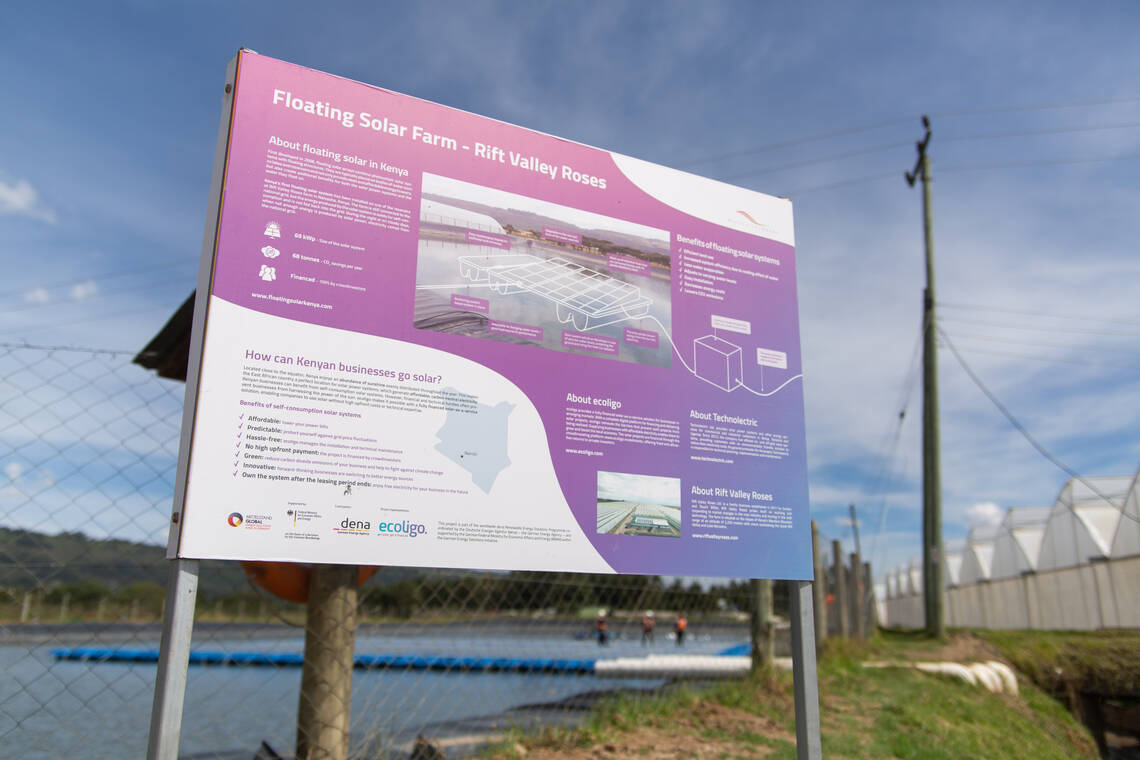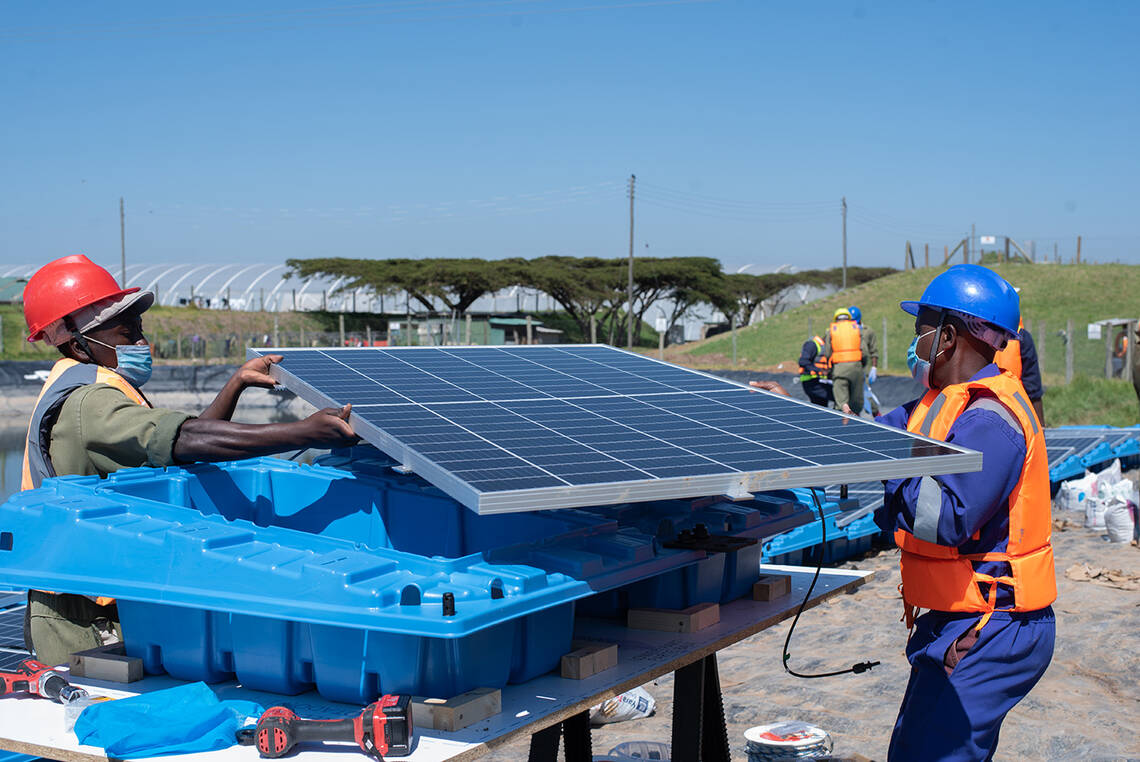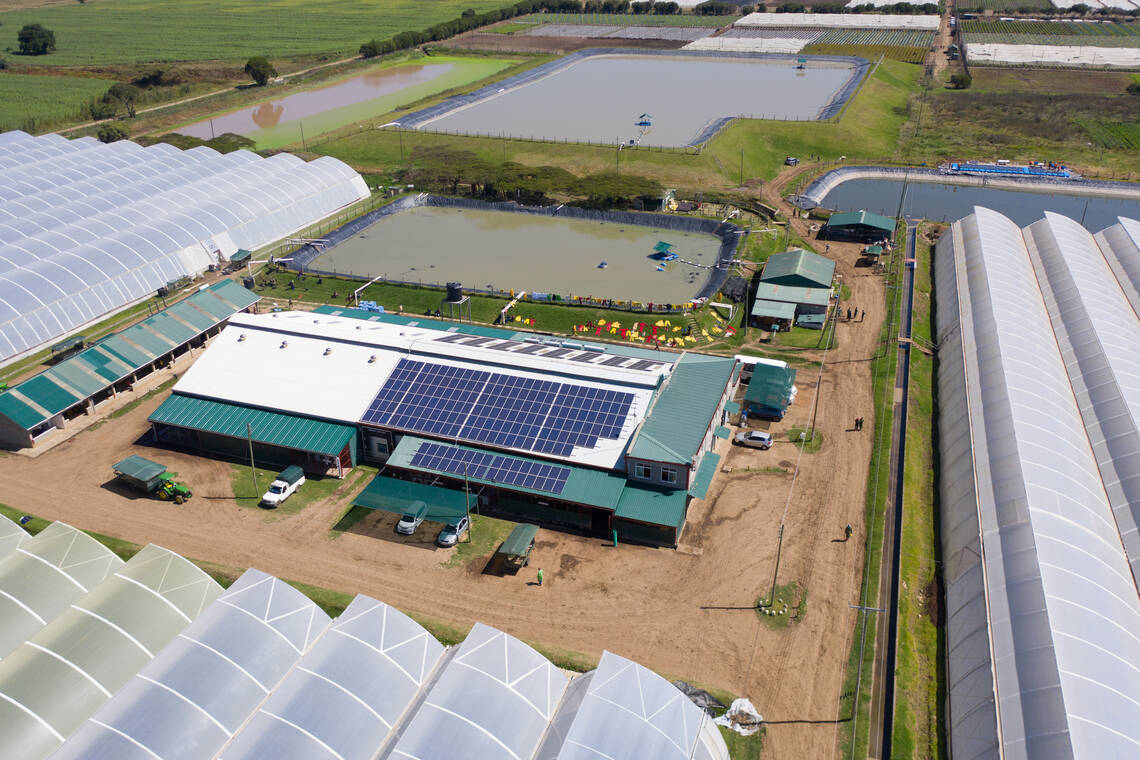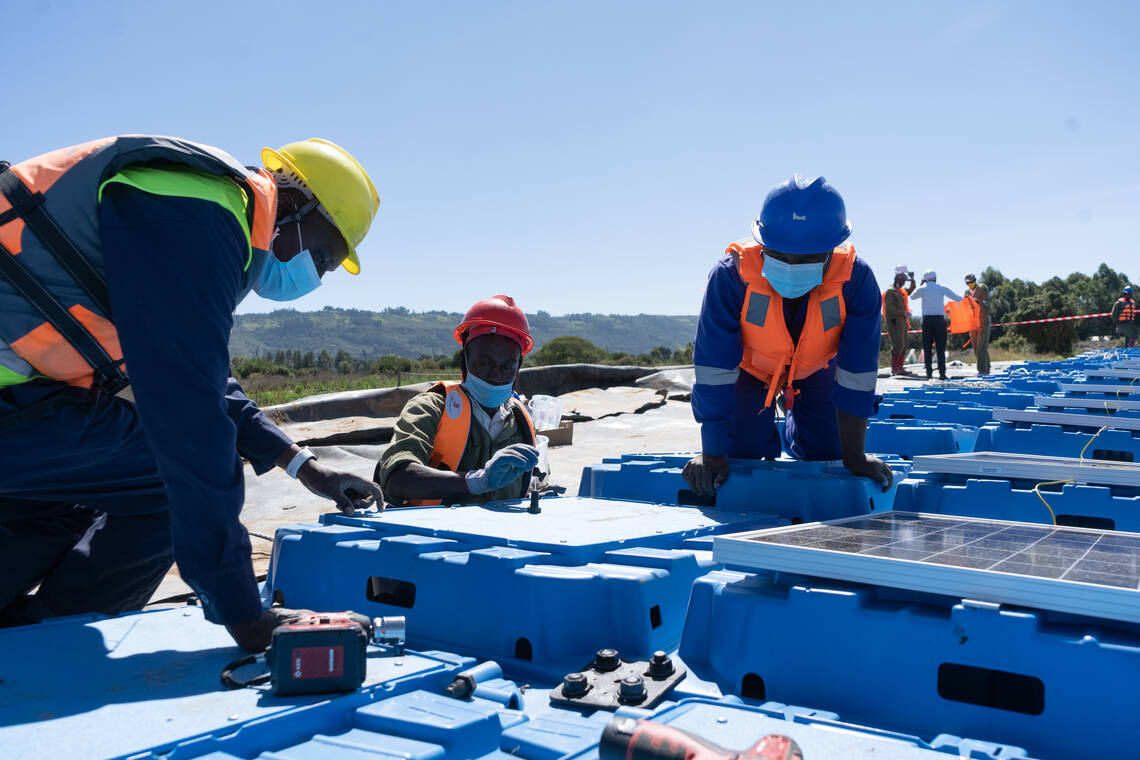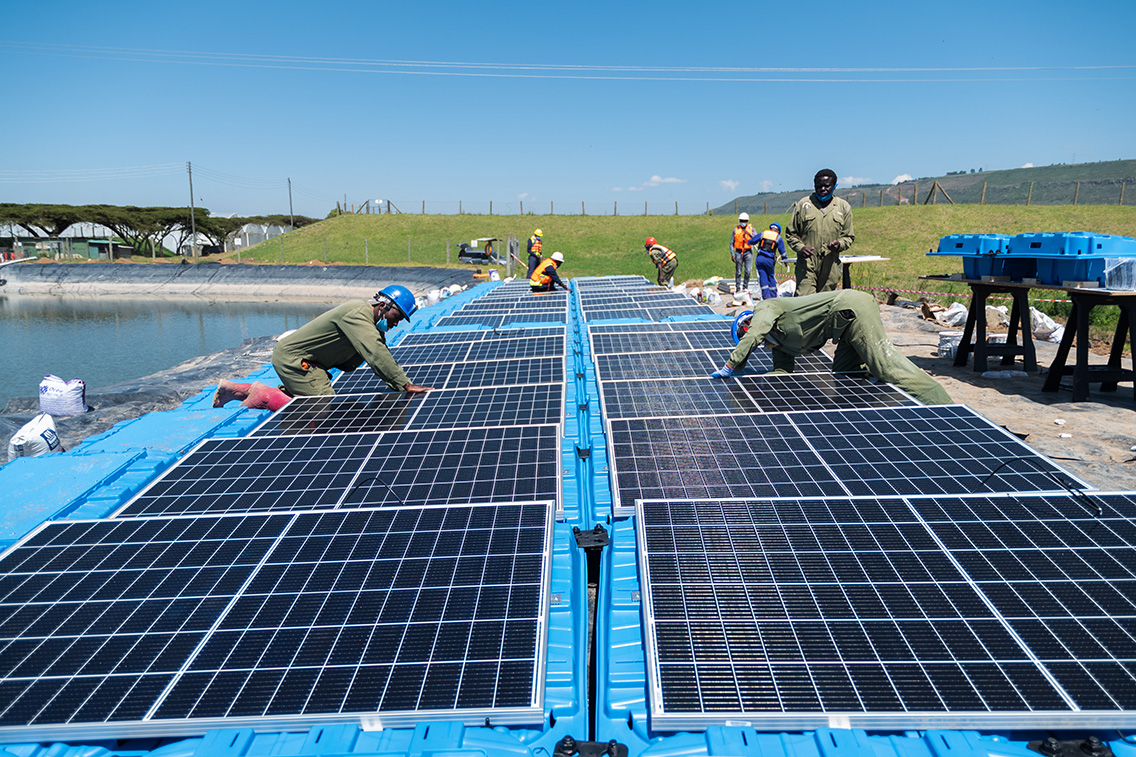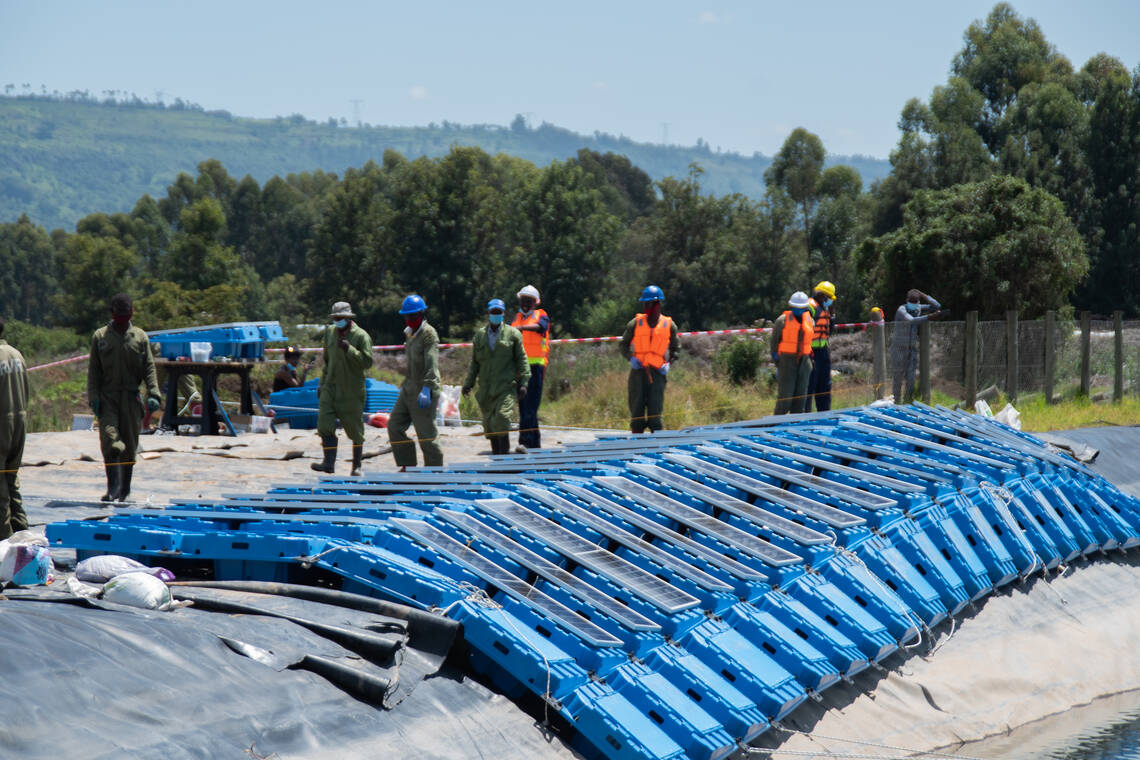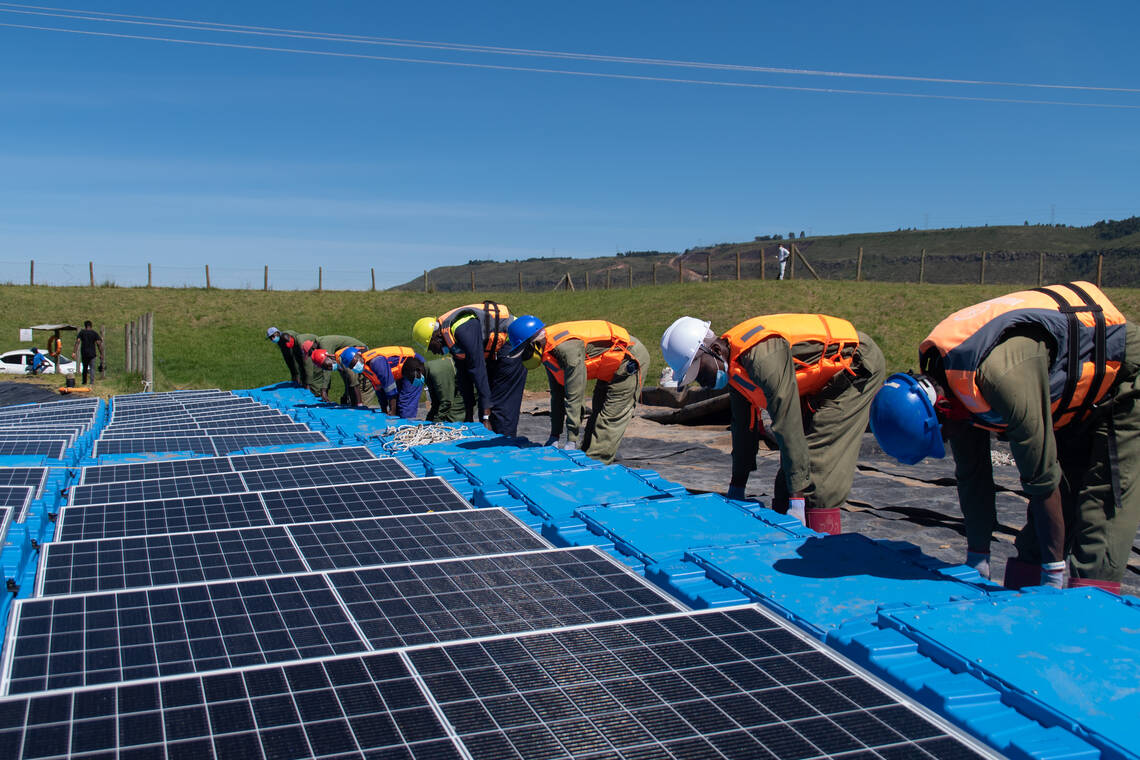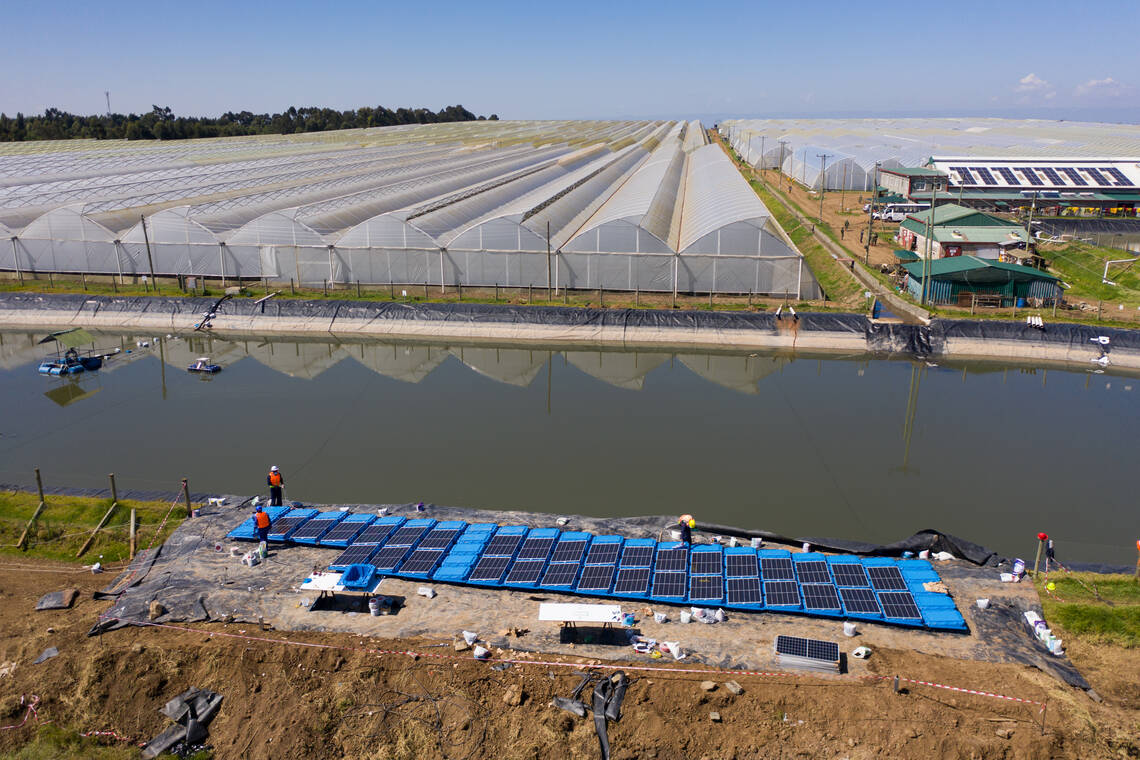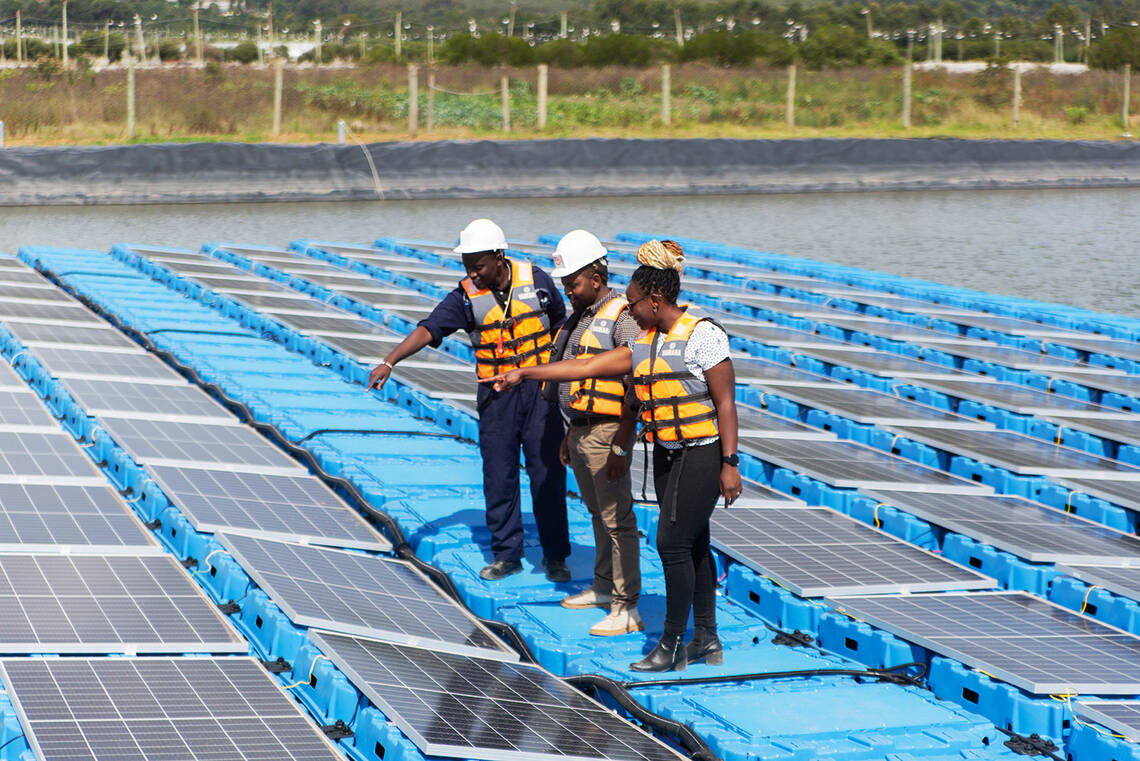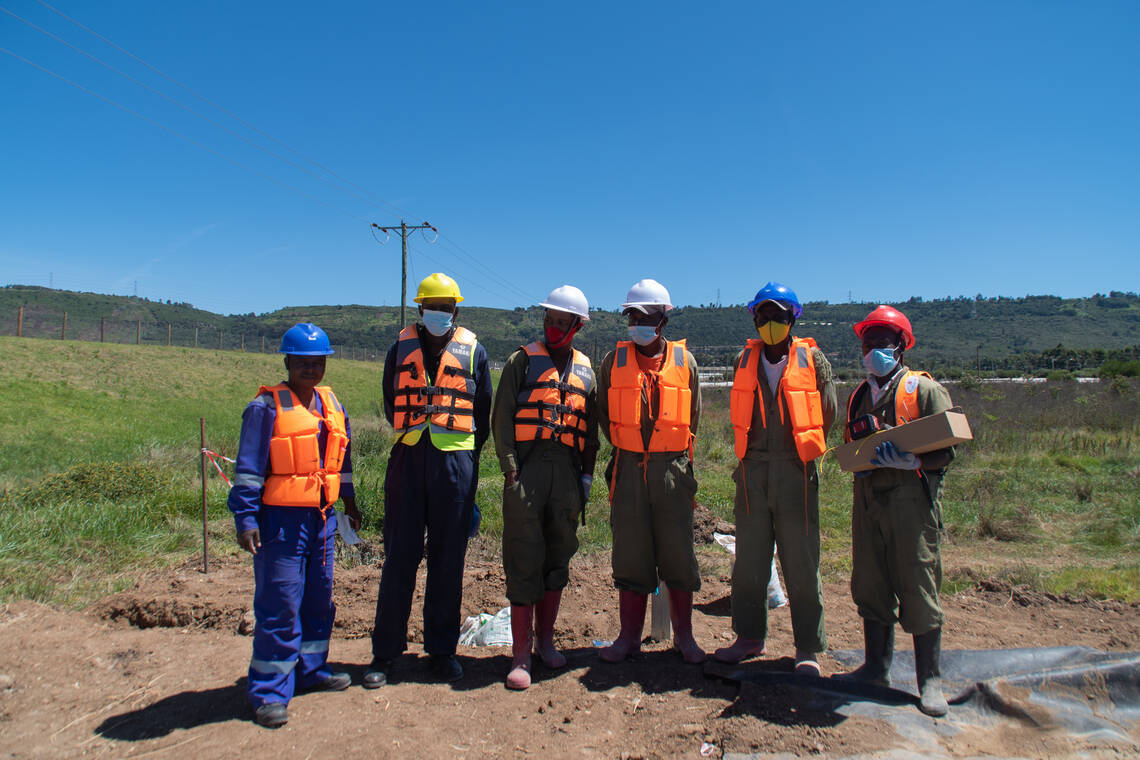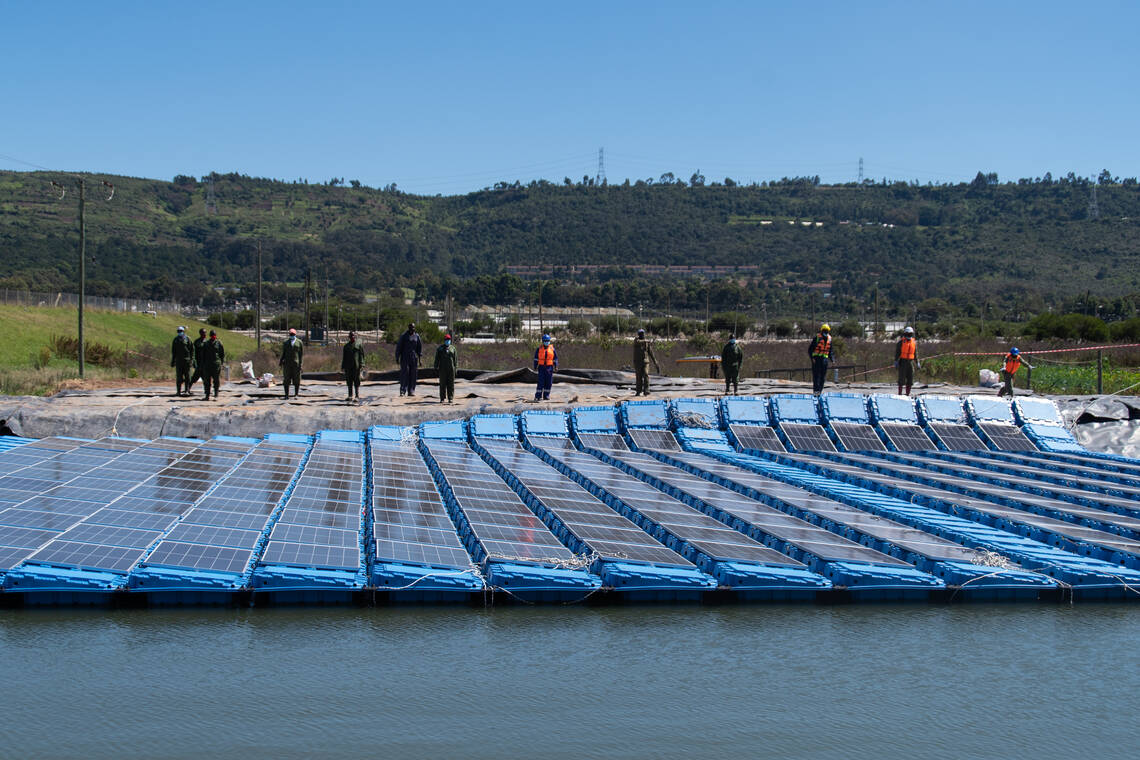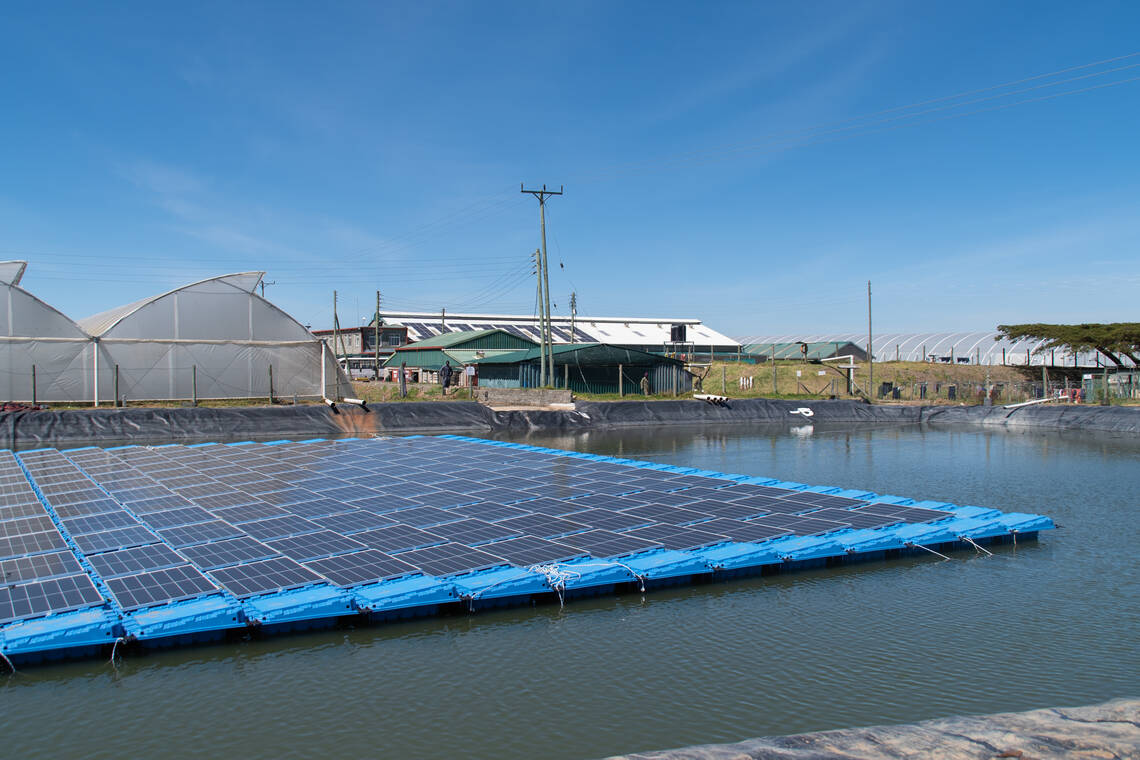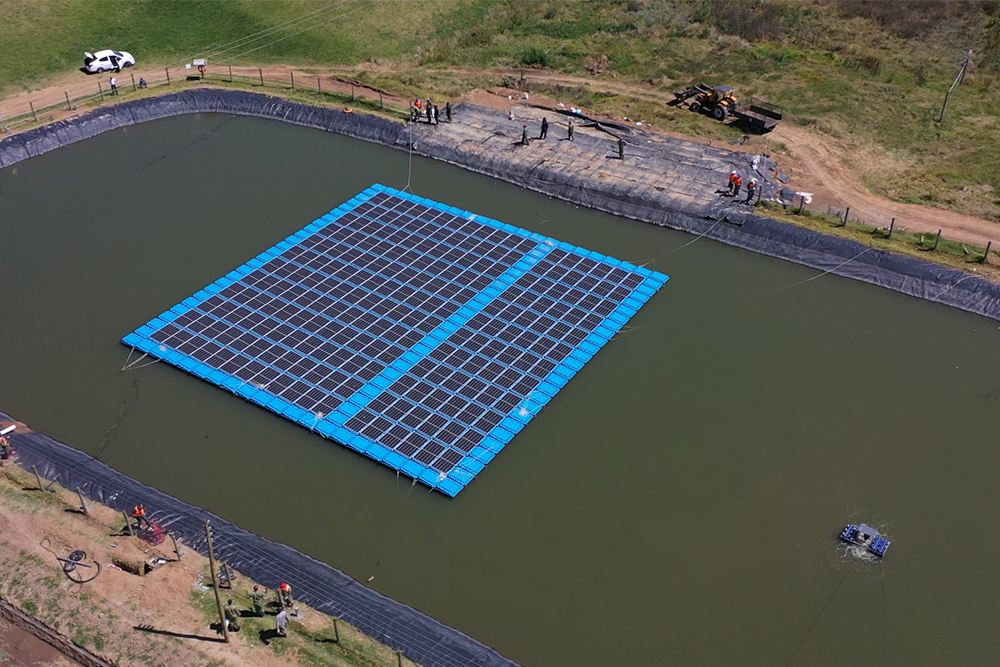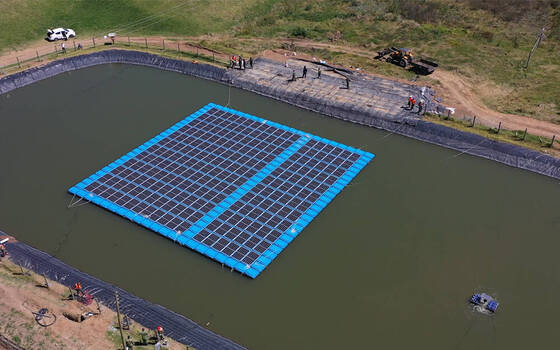Further information about the blueplanet 20.0 TL3 inverter
The first floating solar PV plant in Kenya
Sustainable solar power generation with added value
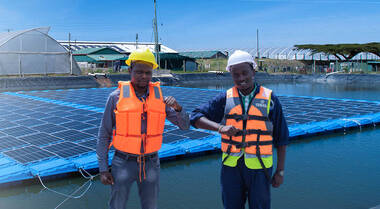
May 7, 2021
Premiere for the blueplanet 20.0 TL3 from KACO new energy: For the first time, the inverter is being used in a floating PV plant in Africa. The system was installed on a water reservoir at the Rift Valley Roses farm in Kenya and was recently put into operation. Read on to learn more about the advantages of this type of installation, how the project came about through crowdinvesting, and how such an approach can increase sustainable energy generation on a global scale.
Floating PV plants are already known and proven in practice. Their use on disused, flooded open-cast mines is not uncommon. Fraunhofer ISE analyzed this potential last year specifically for open-cast lignite mines - with positive results.
An obvious advantage is the more efficient use of space compared to land-based solar parks, since floating plants always manage without using agricultural land. In addition, the water surface has a positive effect on the operating temperature of the PV modules, which is reflected in higher yields.
Both points played a role in the implementation of the project in Kenya. The location, Naivasha, is near the equator. The Rift Valley Roses farm is located at an altitude of 2,250 meters on the slopes of the Aberdare Mountains. There, the climate is temperate and the operating temperature of the modules is not too high. The consistently high solar irradiation throughout the year ensures very good yields.
By building the 69 kW PV system on its own water reservoir, it was not necessary to search for or even purchase an area that could serve another use. The water reservoirs, where rainwater is stored, also show the importance of water as a resource for the rose farm. With this in mind, floating PV demonstrates two other advantages: Shading the water surface reduces evaporation and protects against algae growth.
The system also enables the operators of the rose farm to save energy costs and reduce CO2 emissions. The energy generated significantly reduces the need to purchase electricity from the grid. Together with another 75 kWp PV system installed in 2019, Rift Valley Roses thus covers up to 60% of its electricity needs with solar energy - corresponding to a saving of around 136 tons of CO2 emissions per year. Both projects were initiated by ecoligo GmbH from Berlin. The company implements the projects in cooperation with local EPC partners and also takes care of long-term operation.
Images: ecoligo GmbH, www.ecoligo.com
At the beginning, however, there is often an obstacle to the use of PV, especially in Africa: financing. What better way to implement decentralized energy generation than through decentralized financing? Generate energy in a distributed fashion exactly where it is needed and let the financing flow from many small channels. In Germany, this is often organized in energy cooperatives. Elsewhere, crowdinvesting takes its place.
This is what happened in the case of Rift Valley Roses. And again with the help of ecoligo: 200 crowdinvestors were quickly found on their financing platform www.ecoligo.investments. This made it possible to kick off the project without major upfront costs for the Kenyan farmers. The income from project operations generates annual interest for the private investors over a fixed loan term. In this way, crowdinvestors are actively combating climate change and supporting a sustainable energy economy in emerging countries.
The water reservoirs use freshwater. Floating PV plants can of course also be located near the coast. However, the salty air near the sea requires special protective measures: The blueplanet 20.0 TL3, used here for the first time for a floating system in Africa, is not only protected against dust and jet water; as an OD+ version, it is also available with a special coating to make it more resistant to salt corrosion.
The larger a floating PV plant is, the more another advantage of KACO new energy's string inverters becomes apparent. The "Virtual Central" design allows all inverters - at best even together with the distribution technology - to be placed in one location. If this technical zone is not on the floating platform but on land, installation work and maintenance are greatly simplified. Apart from the modules, there is only a small number of low-maintenance DC combiners on the platform. Only a few lines then need to be laid from these string collectors to the inverters.



